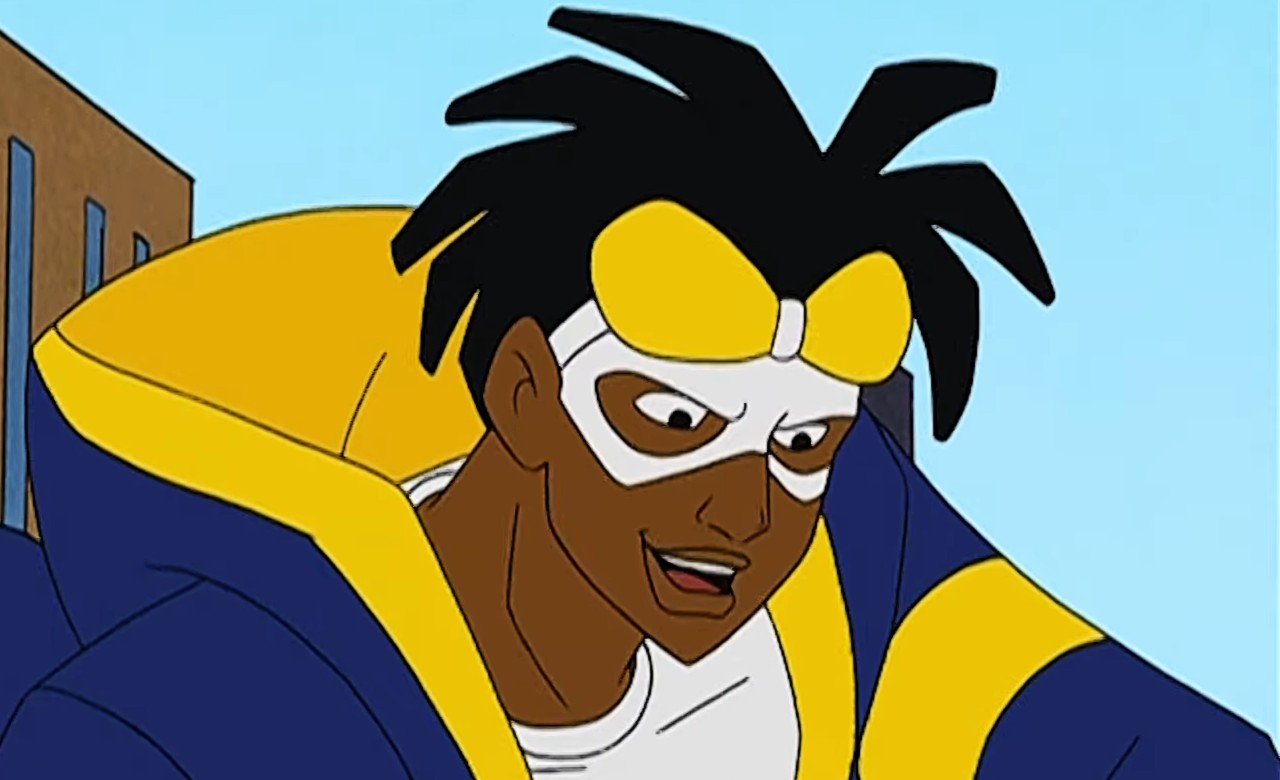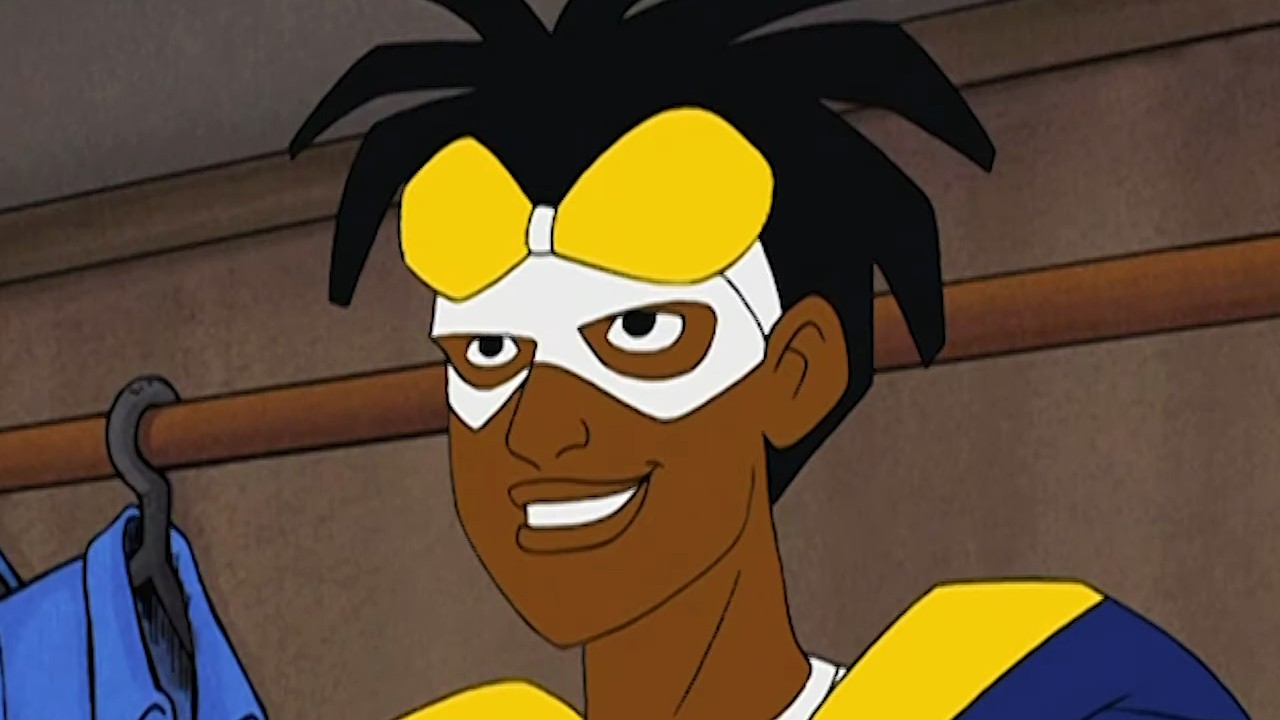
As a dedicated fan of animated television and an avid supporter of Black representation, I can’t help but feel deeply saddened by the untimely cancellation of “Static Shock” back in 2004. This groundbreaking animated series, featuring the first Black superhero to lead his own self-titled show, was more than just a Saturday morning cartoon for me – it was a reflection of my culture and identity as a young Black man growing up in the late 1990s and early 2000s.
Since the 1950s, television and superheroes have been closely connected. The majority of TV shows centered around the adventures of white superheroes, while their Black counterparts were often sidelined. Most Black heroes appeared in secondary or background roles or served as the sole representative of diversity for a token representation. However, on September 23, 2000, “Static Shock” broke the mold and became the first Black superhero to star in his own self-titled animated series.
When it first aired, “Static Shock” was an instant success with high viewership and broad appeal among various age groups. The animated superhero series continued to draw large audiences until its surprising cancellation in 2004. For years, devoted fans of the show have wondered why their beloved “Static Shock” was unceremoniously taken off the air despite being one of the top-performing animated TV programs. I recently discovered the unfortunate reason for the show’s unexpected termination, which left me feeling disappointed as a fan.

What’s The Real Reason Behind Static Shock’s Abrupt End
The ending of “Static Shock” in 2004 has raised questions and created mystery due to the lack of clear information about its cancellation from the voice actors, creators, or studio Warner Bros. However, Phil LaMarr, the voice actor for the show, recently shared some insights on a podcast called “Bled’s Eyeview.” In response to a co-host expressing disappointment over the abrupt ending, LaMarr explained the complex connection between animated television and toy production during that time.
In the late 1990s, when they were trying to create the Static Shock animated series based on the Milestone Comic, not a DC Comic character, they approached a toy company with the designs and concept. However, the toy company replied that they didn’t think there was enough demand for such a character.
The voice actor of Static Shock expressed his displeasure towards an anonymous toy company’s reluctance to produce a TV show centered around a Black superhero team. He strongly suggested that racism may have played a role in their decision. According to him, this hesitation effectively killed the project before it even had a chance to air.
The lack of merchandise sales was among the factors that led to Static Shock being canceled after four successful seasons as the top-rated Saturday Morning show. Despite our high ratings and a Humanitas award win, the quality of our content didn’t matter much to the decision-makers at the time. It seemed to be more about toy sales at Toys-R-Us.
I was deeply invested in that animated superhero show, looking forward to each new episode with excitement. But sadly, all the praise and hype couldn’t shield it from its greatest foe – commercial failure. It wasn’t just me noticing this; Dwayne McDuffie, the creator behind the scenes, had shared his concerns with The World’s Finest about how poor toy sales led to the heart-wrenching cancellation of our beloved series.
McDuffie pointed out that just Pokémon and Family Guy managed to surpass the animated series’ impressive viewership numbers. Yet, he lamented that despite this, the show failed to draw in toy companies or other licensors. Although it received a kids’ meal promotion, a DVD release, and children’s book adaptations, these opportunities weren’t sufficient to prevent its cancellation. He expressed gratitude for having produced 52 episodes of the show.

Why Learning This Sad Truth Affected Me So Deeply
Discovering this new knowledge finally put to rest some long-nagging questions I’ve pondered for decades. Yet, as I delved deeper into the topic, a sense of melancholy washed over me upon learning about the fate of “Static Shock.” The show’s unexpected conclusion left me feeling bereft and disappointed, not just for myself but also for our collective culture. As a young Black man, this series held a unique place in my heart, as it was one of the rare animated programs to feature a Black lead character prominently. Virgil Hawkins’ story resonated with me deeply, marking an important milestone in the superhero genre that acknowledged and represented me authentically.
In the 1990s and 2000s, Hawkins was a role model for young Black Americans, much like Spider-Man is for many. He skillfully combined heroism and adolescence in a way that resonated with me deeply as a young “berd” (Black nerd), who shared his passion for comics and video games. Our backgrounds might have been different, but Static’s representation marked the first time I felt truly seen. His presence helped challenge harmful stereotypes of Black characters in animation that went back decades. When Static disappeared from television, I was left with a profound sense of loss – a void filled by the memories of this exceptional superhero.
At a point in my life when I felt unrecognized and undervalued as an animation fan, the show “Static” resonated deeply with my culture and sense of self. The portrayal of Hawkins as a superhero amplified my pride. This Black hero’s cleverness and wit in outsmarting his foes, the Bang Babies, was not only entertaining but also empowering to watch. The series went beyond typical superhero tropes by delivering insightful social commentary on current issues without being preachy. Although other shows attempted similar themes, none managed to capture the heartfelt authenticity and commitment of “DC animated series.”
I was deeply disappointed when Static Shock was cancelled after four seasons. I looked forward to watching more episodes of Static balancing his crime-fighting duties with everyday teenage life. I had high hopes of witnessing his transformation into the mature Static character portrayed in Milestone/DC comics. Although adult Static has made occasional appearances in other DC productions, it would have been thrilling to follow his hero’s journey as the series’ leading man. Sadly, economic pressures and racial bias hindered the show from reaching its full potential.
After its cancellation, “Static Shock” has continued to be a beloved cultural icon among fans for many years. This lasting enthusiasm is impressive, but it’s hard to believe that a toy company’s unsympathetic decision ultimately ended the successful run of this DC animated series. Although toy tie-ins are less essential now than they were in the 1990s, I still admire “Static Shock” for its unwavering representation of Black characters, social consciousness, and groundbreaking television history. This pioneering superhero show demonstrated the importance of diversity on TV, even if only for a short time.
I’m thrilled to share that Static Shock’s influence continues to resonate with animated productions like the Black Panther miniseries, Justice League (and its successor), and Moon Girl and Devil Dinosaur. Excitingly, there are more Black-led animated and DC TV shows in development for 2024, as outlined in our schedule. Gain a deeper understanding of Static’s background or keep an eye on potential Static Shock movie updates – the anticipation is building!
Read More
- 10 Most Anticipated Anime of 2025
- USD CNY PREDICTION
- Pi Network (PI) Price Prediction for 2025
- Silver Rate Forecast
- Gold Rate Forecast
- USD MXN PREDICTION
- USD JPY PREDICTION
- Brent Oil Forecast
- EUR CNY PREDICTION
- Castle Duels tier list – Best Legendary and Epic cards
2024-07-15 12:07